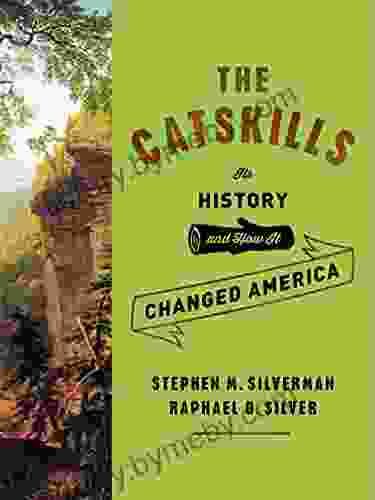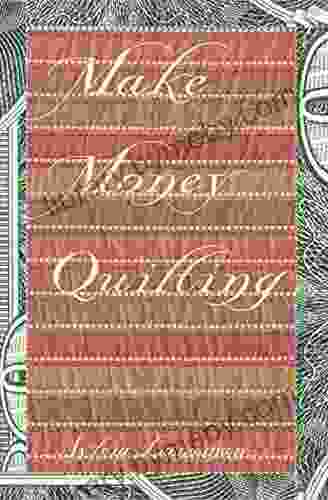The American Dream: Its History And How It Changed America

The American Dream is a national ethos of the United States, the belief that anyone, regardless of where they were born or what their background is, can achieve success in a society where upward mobility is possible for all. This dream is based on the principles of equality, opportunity, and hard work, and it has been a driving force behind the growth and prosperity of the United States.
4.6 out of 5
| Language | : | English |
| File size | : | 278288 KB |
| Text-to-Speech | : | Enabled |
| Screen Reader | : | Supported |
| Enhanced typesetting | : | Enabled |
| Word Wise | : | Enabled |
| Print length | : | 466 pages |
The American Dream has its roots in the Declaration of Independence, which proclaims that all men are created equal and that they have the unalienable right to life, liberty, and the pursuit of happiness. These ideals were further enshrined in the Constitution, which established a government based on the rule of law and the separation of powers. This system of government created a level playing field for all citizens, regardless of their social or economic status.
The American Dream was further strengthened by the westward expansion of the United States in the 19th century. As settlers moved west, they encountered new opportunities for land ownership and economic advancement. The Homestead Act of 1862 gave millions of Americans the chance to own their own land, and the transcontinental railroad opened up new markets for goods and services. These factors contributed to the growth of a robust middle class in the United States, and they helped to make the American Dream a reality for millions of people.
In the 20th century, the American Dream continued to evolve. The rise of industrialization and the growth of the welfare state created new opportunities for economic mobility. The Civil Rights Movement of the 1960s helped to break down barriers of discrimination and to create a more level playing field for all Americans. And the information revolution of the late 20th century created new opportunities for entrepreneurship and innovation.
Today, the American Dream is still alive and well. It is a dream that is shared by people from all walks of life, regardless of their race, religion, gender, or sexual orientation. It is a dream that is based on the belief that anything is possible if you work hard and never give up. And it is a dream that continues to inspire people to come to the United States from all over the world.
The American Dream is not without its critics. Some argue that it is a myth that is used to justify inequality and exploitation. Others argue that it is an outdated ideal that is no longer relevant in the 21st century. However, despite these criticisms, the American Dream remains a powerful force in American society. It is a dream that has inspired generations of Americans to achieve great things, and it is a dream that continues to drive the growth and prosperity of the United States.
The Impact of the American Dream on American Society
The American Dream has had a profound impact on American society. It has shaped the way that Americans think about themselves, their country, and their future. It has also influenced the way that the United States interacts with the rest of the world.
One of the most important ways that the American Dream has shaped American society is by fostering a sense of optimism and hope. Americans believe that they can achieve anything if they work hard and never give up. This optimism has led to a culture of innovation and entrepreneurship, which has been a major factor in the economic growth of the United States.
The American Dream has also helped to create a more egalitarian society. The belief that all men are created equal has led to a gradual breakdown of barriers of discrimination and inequality. Today, the United States is a more diverse and inclusive society than it was in the past, and this is due in part to the influence of the American Dream.
The American Dream has also had a significant impact on the way that the United States interacts with the rest of the world. The United States has long been seen as a beacon of hope and opportunity for people from all over the world. This perception has led to a steady stream of immigration to the United States, which has helped to make the country more diverse and vibrant.
The American Dream is a powerful force in American society. It is a dream that has inspired generations of Americans to achieve great things, and it is a dream that continues to drive the growth and prosperity of the United States.
The Future of the American Dream
The American Dream is constantly evolving, and it is unclear what the future holds for this national ethos. However, there are a number of challenges that the American Dream faces in the 21st century.
One of the biggest challenges facing the American Dream is the increasing gap between rich and poor. In recent decades, the incomes of the wealthy have grown much faster than the incomes of the poor and middle class. This gap is due to a number of factors, including globalization, automation, and the decline of unions. The increasing gap between rich and poor is a threat to the American Dream because it makes it more difficult for people to move up the economic ladder.
Another challenge facing the American Dream is the rising cost of education. In recent decades, the cost of college tuition has skyrocketed, making it more difficult for people to get a higher education. This is a problem because a higher education is increasingly necessary for success in the modern economy. The rising cost of education is a threat to the American Dream because it makes it more difficult for people to achieve their full potential.
Despite these challenges, the American Dream remains a powerful force in American society. It is a dream that is based on the belief that anything is possible if you work hard and never give up. And it is a dream that continues to inspire people from all over the world to come to the United States in search of a better life.
The American Dream is a national ethos of the United States, the belief that anyone, regardless of where they were born or what their background is, can achieve success in a society where upward mobility is possible for all. This dream is based on the principles of equality, opportunity, and hard work, and it has been a driving force behind the growth and prosperity of the United States.
The American Dream has had a profound impact on American society. It has shaped the way that Americans think about themselves, their country, and their future. It has also influenced the way that the United States interacts with the rest of the world.
The American Dream is constantly evolving, and it is unclear what the future holds for this national ethos. However, there are a number of challenges that the American Dream faces in the 21st century, including the increasing gap between rich and poor and the rising cost of education. Despite these challenges, the American Dream remains a powerful force in American society. It is a dream that is based on the belief that anything is possible if you work hard and never give up. And it is a dream that continues to inspire people from all over the world to come to the United States in search of a better life.
### Additional Metadata for SEO
**Title:** The American Dream: Its History And How It Changed America
**Description:** The American Dream is a national ethos of the United States, the belief that anyone, regardless of where they were born or what their background is, can achieve success in a society where upward mobility is possible for all. This article explores the history of the American Dream, its evolution over time, and its impact on American society.
**Keywords:** American Dream, history, evolution, impact, United States, national ethos, upward mobility, success, opportunity
**Image:** [Image of the Statue of Liberty]
**Alt attribute:** The Statue of Liberty is a symbol of the American Dream.
4.6 out of 5
| Language | : | English |
| File size | : | 278288 KB |
| Text-to-Speech | : | Enabled |
| Screen Reader | : | Supported |
| Enhanced typesetting | : | Enabled |
| Word Wise | : | Enabled |
| Print length | : | 466 pages |
Do you want to contribute by writing guest posts on this blog?
Please contact us and send us a resume of previous articles that you have written.
 Book
Book Novel
Novel Page
Page Chapter
Chapter Text
Text Story
Story Genre
Genre Reader
Reader Library
Library Paperback
Paperback E-book
E-book Magazine
Magazine Newspaper
Newspaper Paragraph
Paragraph Sentence
Sentence Bookmark
Bookmark Shelf
Shelf Glossary
Glossary Bibliography
Bibliography Foreword
Foreword Preface
Preface Synopsis
Synopsis Annotation
Annotation Footnote
Footnote Manuscript
Manuscript Scroll
Scroll Codex
Codex Tome
Tome Bestseller
Bestseller Classics
Classics Library card
Library card Narrative
Narrative Biography
Biography Autobiography
Autobiography Memoir
Memoir Reference
Reference Encyclopedia
Encyclopedia Sam Subity
Sam Subity Second Edition Revised Kindle Edition
Second Edition Revised Kindle Edition Micol Ostow
Micol Ostow Vivian Foster
Vivian Foster Mark Fisher
Mark Fisher Mark Ribowsky
Mark Ribowsky Laura Stamm
Laura Stamm Toby A H Wilkinson
Toby A H Wilkinson Leo W Chang
Leo W Chang Shifio Patterns
Shifio Patterns Leila Kalmbach
Leila Kalmbach Thomas Tregner
Thomas Tregner Polo Tate
Polo Tate Suzanne Bowman Williams
Suzanne Bowman Williams Stephen J Pyne
Stephen J Pyne Marti Melville
Marti Melville Simon Gandolfi
Simon Gandolfi Krystal Kelly
Krystal Kelly Llewellyn H Rockwell
Llewellyn H Rockwell M Mitchell Waldrop
M Mitchell Waldrop
Light bulbAdvertise smarter! Our strategic ad space ensures maximum exposure. Reserve your spot today!

 Donovan CarterThe Captivating Testimony of an African Immigrant: An Unforgettable Journey...
Donovan CarterThe Captivating Testimony of an African Immigrant: An Unforgettable Journey... Francis TurnerFollow ·3.5k
Francis TurnerFollow ·3.5k Eliot FosterFollow ·8.6k
Eliot FosterFollow ·8.6k Rudyard KiplingFollow ·14.6k
Rudyard KiplingFollow ·14.6k Felipe BlairFollow ·10.8k
Felipe BlairFollow ·10.8k W.B. YeatsFollow ·6.6k
W.B. YeatsFollow ·6.6k Grant HayesFollow ·3.5k
Grant HayesFollow ·3.5k Tyler NelsonFollow ·6.2k
Tyler NelsonFollow ·6.2k Efrain PowellFollow ·2.8k
Efrain PowellFollow ·2.8k

 Clay Powell
Clay PowellDiscover the Enigmatic Beauty and Profound Meaning in...
An Exploration of Emptiness, Fulfillment,...

 Brenton Cox
Brenton CoxThe Life and Times of the Woman Who Changed Abortion: The...
Norma McCorvey, the woman known...

 Darius Cox
Darius CoxBest 60 Short Hairstyles For Women With Thick Hair: A...
Embracing the beauty of...

 John Parker
John ParkerThe Healthy Pregnancy Book: Your Essential Guide to a...
Pregnancy is a...
4.6 out of 5
| Language | : | English |
| File size | : | 278288 KB |
| Text-to-Speech | : | Enabled |
| Screen Reader | : | Supported |
| Enhanced typesetting | : | Enabled |
| Word Wise | : | Enabled |
| Print length | : | 466 pages |














